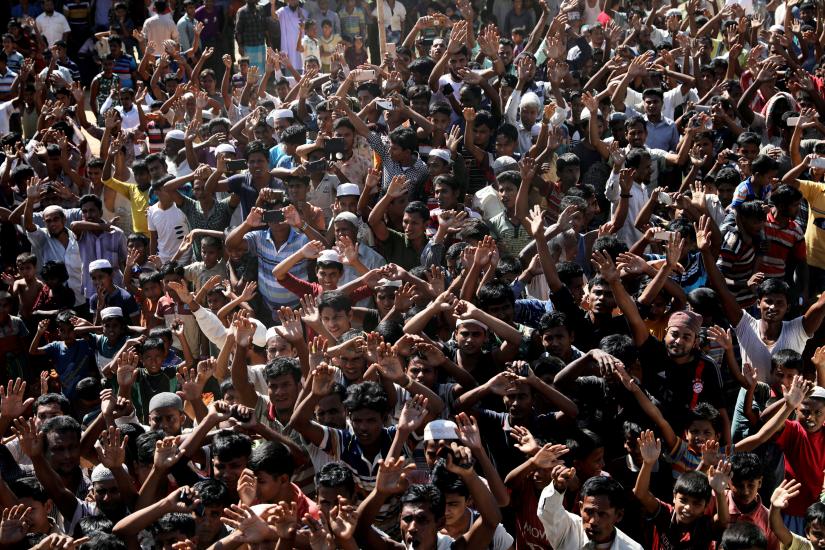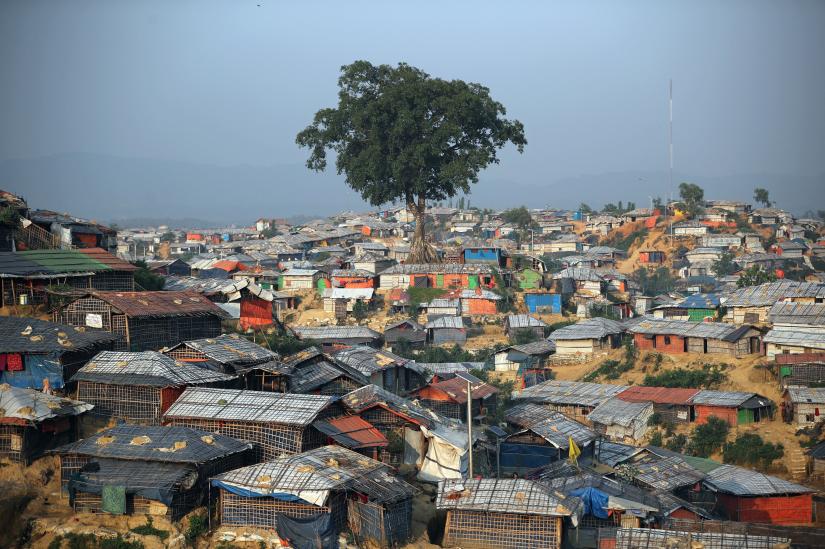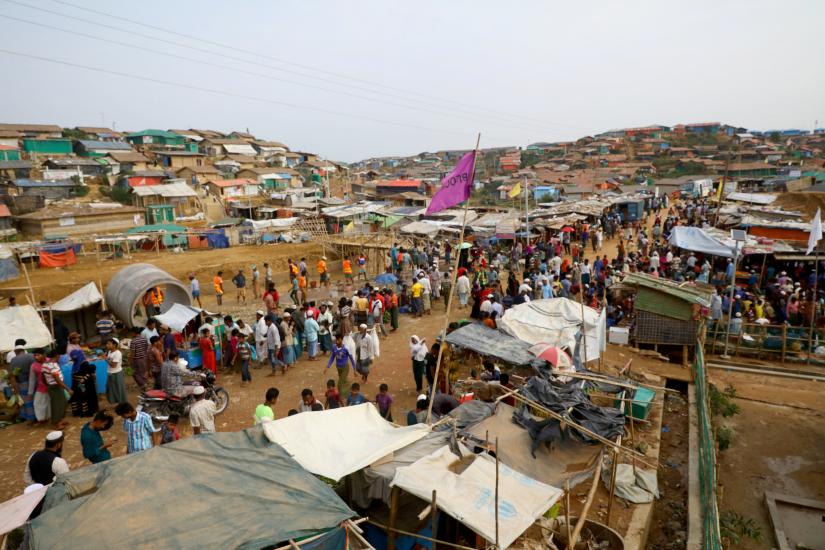 Bangladesh faces a food crisis in the near future with the influx of Rohingyas in the southeastern coastal district of Cox’s Bazar, says a report.
Bangladesh faces a food crisis in the near future with the influx of Rohingyas in the southeastern coastal district of Cox’s Bazar, says a report.
The ‘2019 Global Report on Food Crises (GRFC)’ was published by the Global Network against Food Crises on Tuesday (Apr 3).
Their members include the United Nations' Food and Agriculture Organization (FAO), World Food Programme and the European Union.
The study covered acute food insecurity data for 53 countries and excluded 13 countries and territories including North Korea, Venezuela and Western Sahara due to a lack of recently validated data.
The report said that the Bangladeshi population faces higher levels of food insecurity than the Rohingyas who fled Myanmar. “The influx of refugees has aggravated the already fragile situation of one of the poorest and most vulnerable districts in Bangladesh, where most local households derive their livelihoods from farming plots of around a hectare or less and fishing,” the report read.
“The influx of refugees has aggravated the already fragile situation of one of the poorest and most vulnerable districts in Bangladesh, where most local households derive their livelihoods from farming plots of around a hectare or less and fishing,” the report read.
The publication said that “many locals have lost access to previously farmed lands and between Aug 2017 and Mar 2018 as around 100 hectares of crop land in Teknaf and Ukhiya have been damaged by refugee activities, occupied by refugee settlements or rendered useless by sandy soil flowing down from the mountain slopes, which are being used for refugee housing.”
“Local farmers in Teknaf and Ukhiya have always faced a lack of fresh water for agricultural production.
However, fecal contamination levels in the affected areas have intensified scarcity of clean water for cooking and normal daily hygiene, while the population increase has massively increased overall demand for fresh water,” it said. Moreover, food security for host communities showed a marked deterioration, with the percentage of households with poor or borderline food consumption increasing sharply from 31 percent in 2017 to 80 percent by September 2018.
Moreover, food security for host communities showed a marked deterioration, with the percentage of households with poor or borderline food consumption increasing sharply from 31 percent in 2017 to 80 percent by September 2018.
The publication reports that those who earned a living from forest resources have been deprived of their livelihood as almost 2 000 hectares of forest reserves have been destroyed.
Since 2017, a ban has been in place on fishing in the Naf River for security and border control reasons which has placed significant pressure on the nearly 35000 fishermen and their families.
“Many of them have been compelled to work as wage labourers, but the availability of cheaper refugee labour has made jobs scarce and pushed down daily wage rates.
“These factors along with diminished access to basic services, and an increase in staple food prices because of higher demand could represent the main factors behind the fall in acceptable food consumption levels among host communities over the last year.”
The reports said that those who fled Myanmar have no opportunity to produce their own food and limited opportunities to earn money and provide for their families and almost the entire displaced population (98 percent) relies on food assistance, which plays a crucial role in maintaining acceptable levels of food consumption.
Over 738,000 Rohingya refugees escaping violence and persecution in Myanmar have settled in camps, settlements and within host communities in Bangladesh’s Cox’s Bazar district.
The report says that as of Dec 2018, the total number of refugees in the area stands at nearly 1 million which is more than three times the number of the host population in the district. The worst food crises in 2018, in order of severity, were in Yemen, the Democratic Republic of the Congo, Afghanistan, Ethiopia, the Syrian Arab Republic, the Sudan, South Sudan and north Nigeria.
The worst food crises in 2018, in order of severity, were in Yemen, the Democratic Republic of the Congo, Afghanistan, Ethiopia, the Syrian Arab Republic, the Sudan, South Sudan and north Nigeria.
These eight countries accounted for two thirds of the total number of people facing acute food insecurity amounting to nearly 72 million people.
According to the report, 14.7 million people facing food insecurity and in need of urgent action are from four countries in South and Southeast Asia (Myanmar, Afghanistan, Bangladesh and Pakistan), which accounts for 13 percent of the GRFC 2019 total.
The report warns that war, extreme weather and economic downfall in 2018 have left more than 113 million in dire need of help.
 National
National
41475 hour(s) 39 minute(s) ago ;
Evening 10:33 ; Thursday ; Jul 10, 2025
Bangladesh faces food crises due to Rohingya influx
Send
Bangla Tribune Desk
Published : 17:42, Apr 04, 2019 | Updated : 17:47, Apr 04, 2019
Published : 17:42, Apr 04, 2019 | Updated : 17:47, Apr 04, 2019
0 ...0 ...
/st/
Topics: Top Stories
- KOICA donates medical supplies to BSMMU
- 5 more flights to take back British nationals to London
- Covid19: Rajarbagh, Mohammadpur worst affected
- Momen joins UN solidarity song over COVID-19 combat
- Covid-19: OIC to hold special meeting
- WFP begins food distribution in Cox’s Bazar
- WFP begins food distribution in Cox’s Bazar
- 290 return home to Australia
- Third charter flight for US citizens to return home
- Dhaka proposes to postpone D8 Summit
Unauthorized use of news, image, information, etc published by Bangla Tribune is punishable by copyright law. Appropriate legal steps will be taken by the management against any person or body that infringes those laws.
Bangla Tribune is one of the most revered online newspapers in Bangladesh, due to its reputation of neutral coverage and incisive analysis.
F R Tower, 8/C Panthapath, Shukrabad, Dhaka-1207 | Phone: 58151324; 58151326, Fax: 58151329 | Mob: 01730794527, 01730794528


